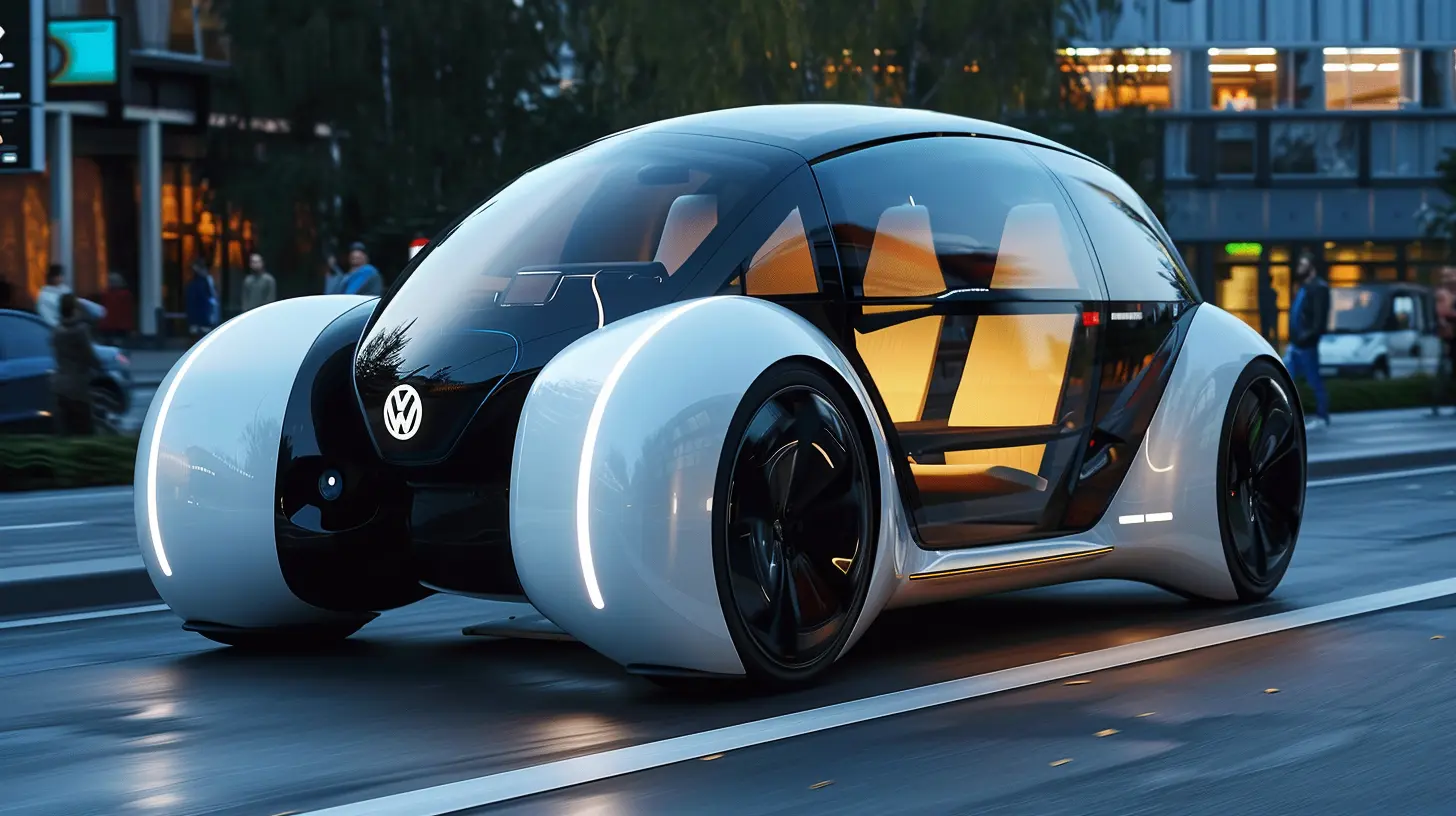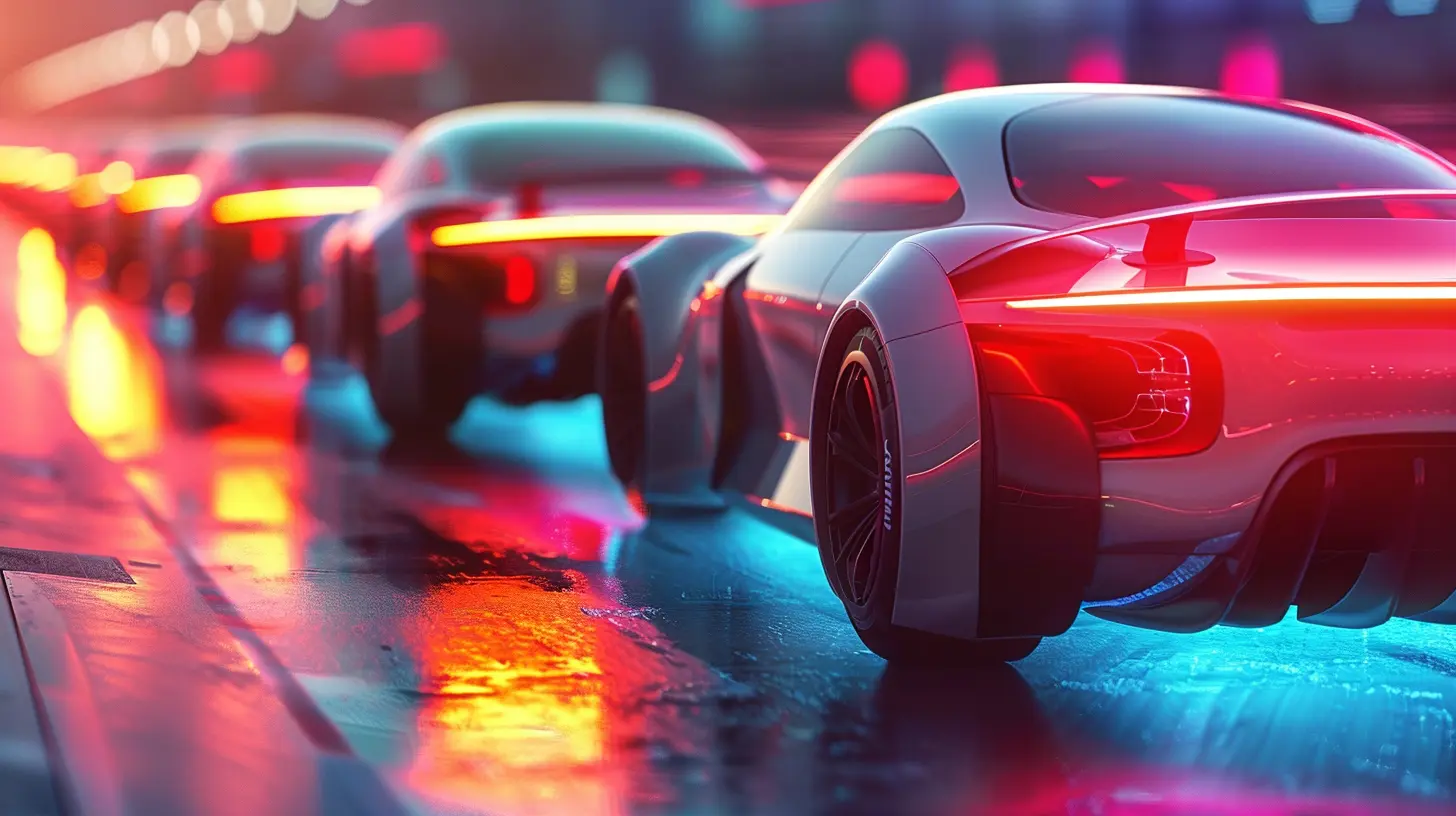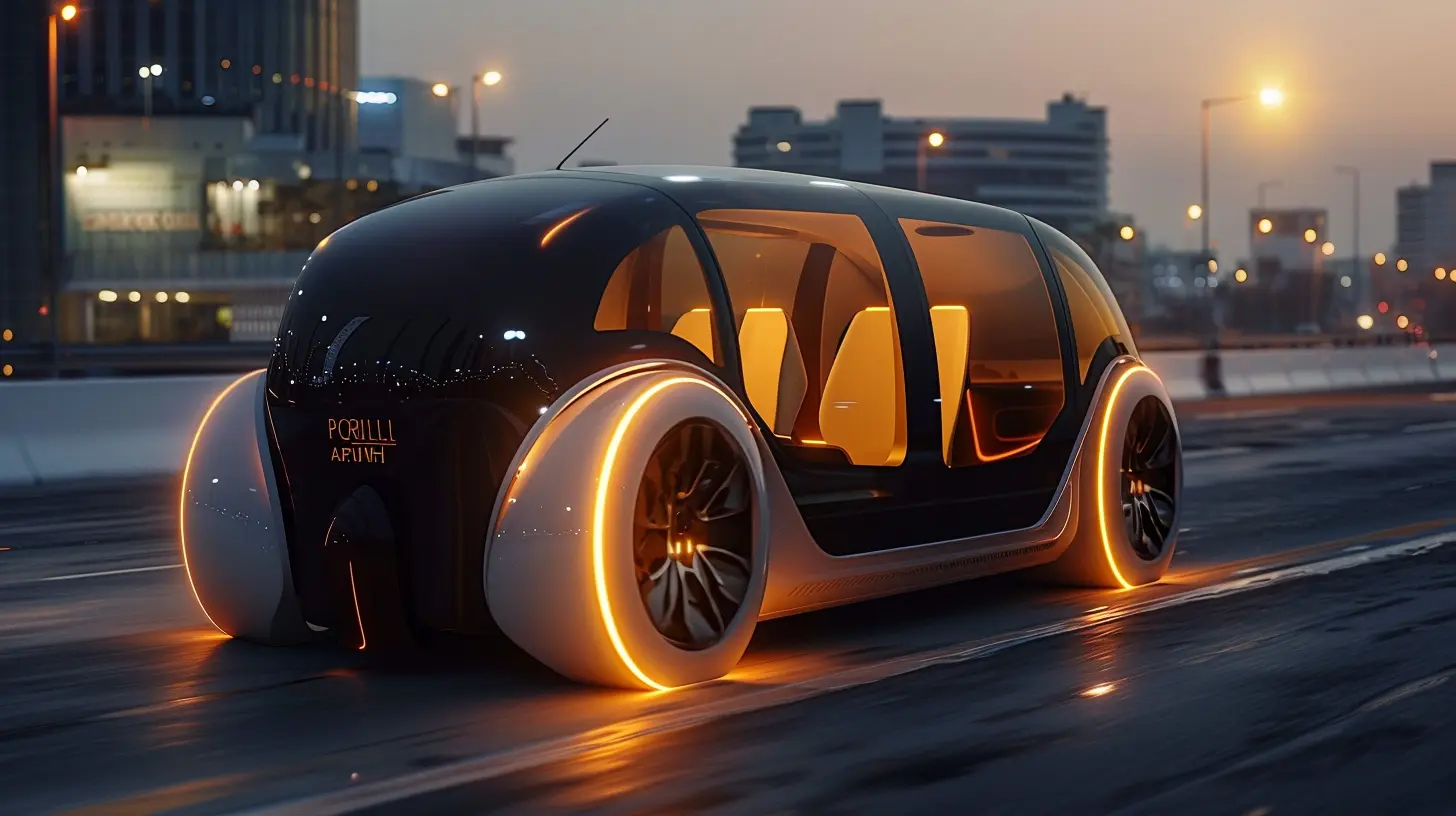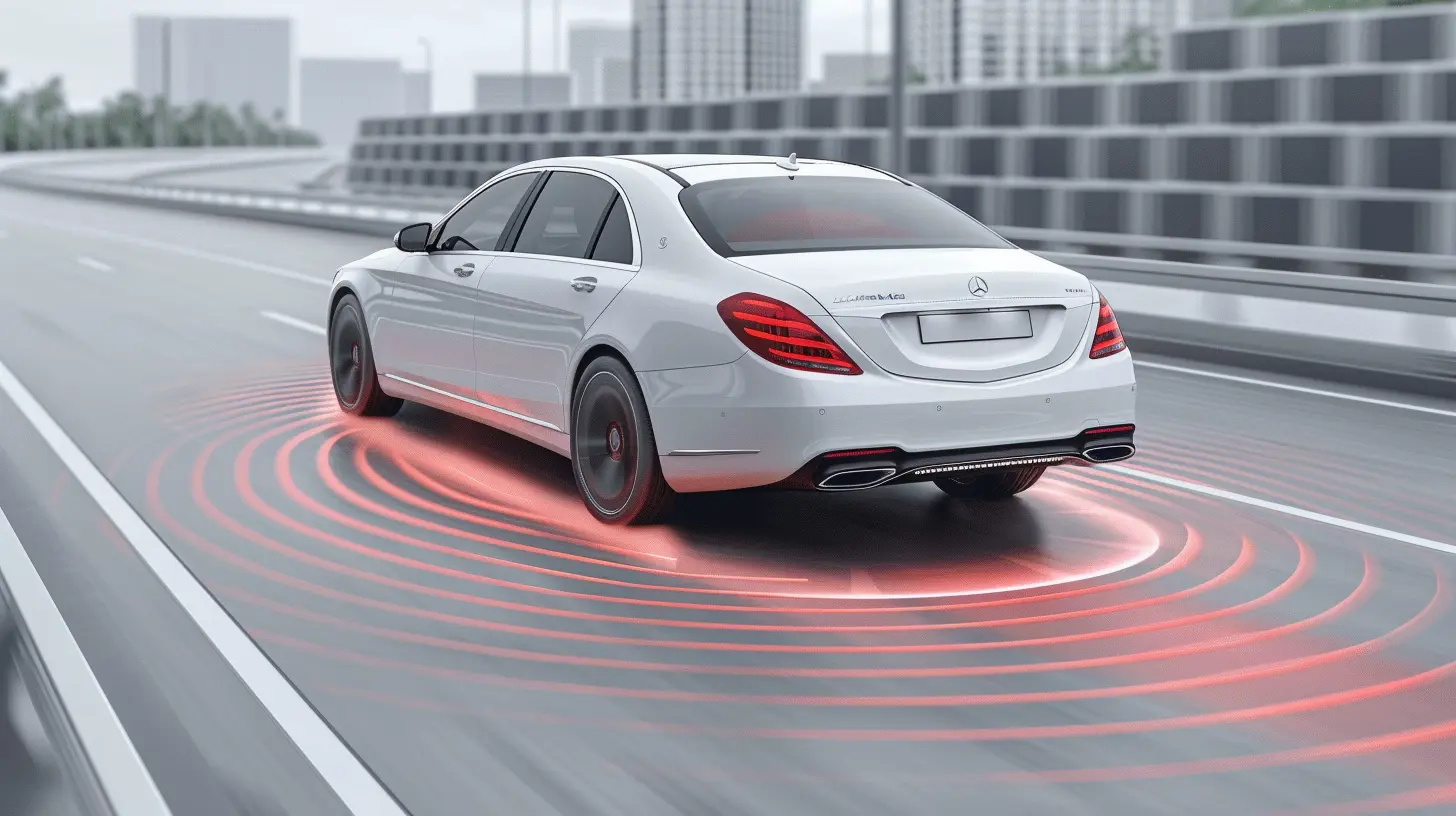The Evolution of Sensor Technology in Self-Driving Cars
29 July 2025
Imagine a world where your daily commute doesn't involve the stress of traffic, the hassle of parking, or the risk of human error. That world is inching closer thanks to self-driving cars—and at the heart of these futuristic vehicles are sensors. Yep, those tiny technological marvels that act like eyes, ears, and even sixth senses for autonomous vehicles.
So how did we get here? How have sensors evolved to power the rise of self-driving cars? Buckle up, because we’re going on a journey through the past, present, and potential future of sensor technology in autonomous vehicles.
A Quick Trip Back in Time: The Humble Beginnings
Before we zoom into today’s sophisticated self-driving prototypes, let’s rewind to where it all started.Early car automation wasn’t about full autonomy—it was about driver assistance. Think cruise control in the 1950s. It was revolutionary at the time. But the real game-changer came in the early 2000s when DARPA (Defense Advanced Research Projects Agency) launched its Grand Challenge. This competition lit the fuse for innovation in the autonomous vehicle space.
The first entrants? Well, they didn't even finish the race. But seeds were planted, and those early failures sparked a flurry of sensor innovation.
The Role of Sensors in Self-Driving Cars
Let’s get one thing straight—self-driving cars are only as good as the data they collect. And that’s where sensors come in.Think of sensors as the vehicle’s sensory organs. They detect everything—other vehicles, lane markings, pedestrians, traffic lights, you name it. Without them, the car is basically blind and deaf.
Core Functions of Sensors:
- Perception: Understanding the environment.- Localization: Knowing exactly where the car is.
- Control: Managing speed, direction, and movement.
- Prediction: Anticipating the behavior of other road users.
Sounds complex, right? That’s because it is. But that’s also what makes it fascinating.
Types of Sensors and Their Evolution
Let’s break down the key players in the sensor world and see how they’ve morphed over time.1. Cameras
Cameras are the eyes of the car, capturing high-resolution visual data. Over time, they've gone from basic dash cams to multi-directional, high-def, night-vision-enabled systems.Then: Limited resolution, poor low-light performance, narrow field of view.
Now: 360-degree vision, deep learning integration for image recognition, and real-time video processing.
What makes cameras so valuable is their ability to "see" signs, lights, and even facial expressions of pedestrians. But, they have a key flaw—they struggle in poor weather.
2. Radar (Radio Detection and Ranging)
Radar systems use radio waves to detect objects and measure their speed and distance. They're especially handy in detecting the movement of nearby vehicles.Then: Lower frequency, bulky equipment, limited resolution.
Now: High-frequency radars that can separate targets that are very close together and work well in fog, rain, or snow.
It's kind of like giving your car a superhero-style ability to "see" through bad weather.
3. LiDAR (Light Detection and Ranging)
LiDAR has often been dubbed the crown jewel of sensor tech in autonomous cars. It uses laser beams to create detailed 3D maps of the environment.Then: Massive, expensive, and with limited range.
Now: Compact, cost-effective, and insanely accurate.
LiDAR gives the vehicle a 360-degree view at all times. However, critics argue that its reliance on light makes it vulnerable in certain conditions, and it's still relatively pricey compared to other sensors.
4. Ultrasonic Sensors
These are your parking sensors—short-range, cost-effective, and perfect for detecting curbs, walls, or other cars while parking.Then: Only useful for basic obstacle detection at low speeds.
Now: Enhanced accuracy, incorporated into advanced driver-assistance systems (ADAS).
They're the small but mighty sidekicks in the sensor ensemble.
5. Infrared Sensors
Used mostly for night vision and heat mapping. Not mainstream yet, but their role is growing.Then: Rare and rarely reliable.
Now: Experimental but promising for night-time pedestrian detection and even identifying animals crossing the street.
Sensor Fusion: The Real MVP
Okay, so we have a bunch of sensors, each doing its thing. But the real magic happens when they work together.This is called sensor fusion, and it’s exactly what it sounds like—blending inputs from multiple sensors to create a unified, more accurate understanding of the environment.
Why is this crucial?
Because where one sensor fails, another can fill in the gaps. Cameras might struggle in fog, but radar won't. LiDAR might miss certain textures, but cameras won’t. It's like assembling a superhero team—each member has strengths and weaknesses, but together, they're unstoppable.
The AI Connection: Making Sense of All That Data
Alright, sensors collect truckloads of data every second. But who’s making sense of all that info?That’s where Artificial Intelligence (AI) steps in. Sophisticated algorithms process the data, make decisions, and send instructions to the vehicle’s controls.
We’re talking about:
- Object recognition
- Path planning
- Behavior prediction
- Real-time reaction
It’s like giving the car a brain to go with its eyes and ears.
Challenges in Sensor Technology
Let’s not pretend it’s all smooth sailing. Sensor tech, for all its brilliance, still has its fair share of hurdles.1. Environmental Limitations
Rain, snow, fog, and even dust can mess with sensor performance. Cameras and LiDAR hate glare. Radar can get confused in dense urban settings. No single sensor is perfect.2. Data Overload
With hundreds of gigabytes of data generated per hour, managing and processing this information quickly is a major challenge. It’s like trying to drink from a firehose.3. Cost
LiDAR, in particular, has been notoriously expensive. Although prices are coming down, outfitting a car with a full sensor suite isn’t exactly cheap.4. Redundancy and Safety
Redundancy is critical. If one sensor fails, there must be others that can compensate. This isn’t just a tech issue—it’s a safety issue. Lives are literally on the line.Breakthroughs and Future Trends
Now for the exciting part—what’s coming next?1. Solid-State LiDAR
Traditional LiDARs have moving parts. Solid-state versions? No moving parts, which means they’re more durable, compact, and affordable.Companies like Luminar and Innoviz are leading the charge here.
2. 4D Radar
Yes, 4D! These systems map not just distance and speed, but also elevation and velocity in unprecedented detail. Perfect for crowded cities.3. Thermal Imaging
Want to spot a deer in the middle of a dark highway? Thermal sensors will make it possible. Expect these to become more common as the tech matures and prices drop.4. Edge AI Processing
Processing data close to the source (i.e., inside the vehicle) reduces latency and enhances real-time decision-making. It’s the future of in-car intelligence.5. Quantum and Photonic Sensors
Still in the lab stages, but these hold promise for extreme precision and sensitivity. Think of it as turning your sensors from 1080p to 8K Ultra HD.The Road Ahead: Toward Full Autonomy
So, where does all this lead us?To reach Level 5 autonomy (where no human intervention is needed, ever), sensor tech must hit near-perfection. That means combining AI, machine learning, and an arsenal of cutting-edge sensors to create cars that can "see" and "think" even better than we can.
We're not quite there yet—but the progress is insane. Companies like Tesla, Waymo, Cruise, and others are pouring billions into sensor R&D.
And honestly? It’s just a matter of time.
Final Thoughts: A High-Tech Symphony on Wheels
Self-driving cars are often called computers on wheels. But really, they’re more like orchestras—with each sensor playing its part, conducted by powerful AI.Sensor technology doesn’t just make autonomy possible—it makes it safe, efficient, and, eventually, ubiquitous.
So next time you see a self-driving car rolling past (probably with a spinning LiDAR on top), give a nod to the unsung heroes—the sensors—making that magic happen.
Because if the car is the body, and AI is the brain, then sensors? They’re the senses, the soul, and the story of how we’re moving into the future of transportation.
all images in this post were generated using AI tools
Category:
Autonomous VehiclesAuthor:

John Peterson
Discussion
rate this article
1 comments
Amber McPhail
Sensor advancements redefine safety and innovation in autonomous driving.
August 1, 2025 at 3:48 AM

John Peterson
Absolutely! The evolution of sensor technology is crucial for enhancing safety and driving innovation in autonomous vehicles.


